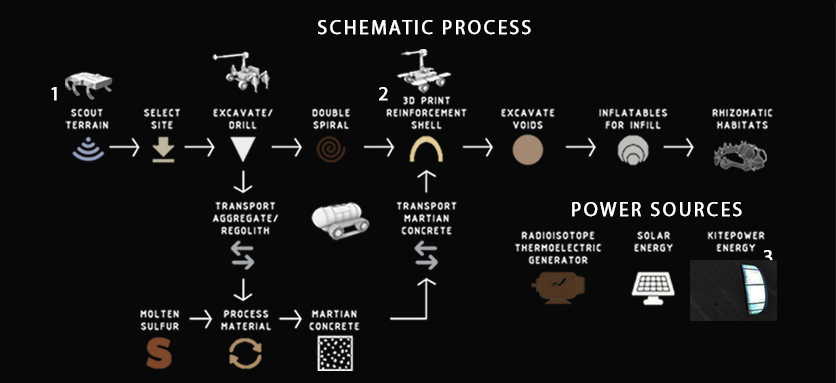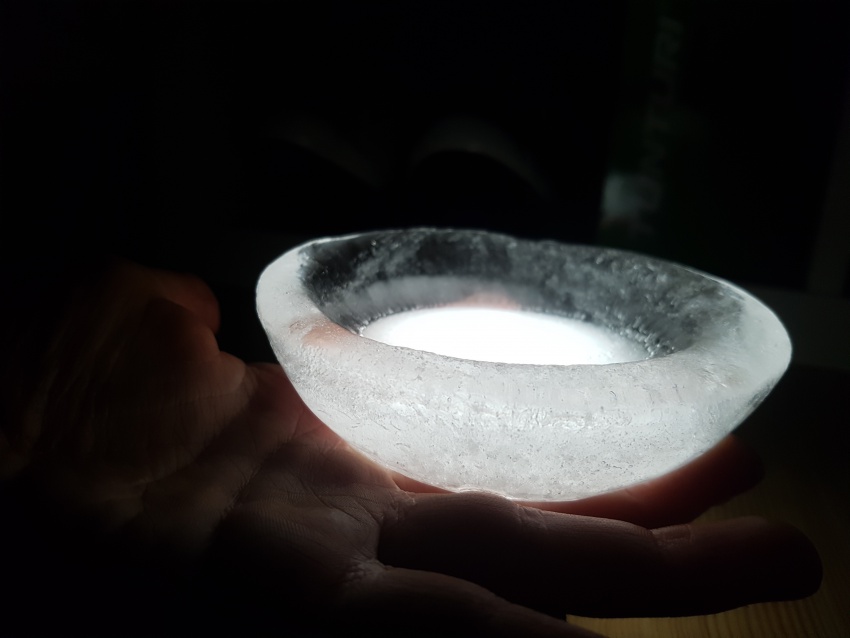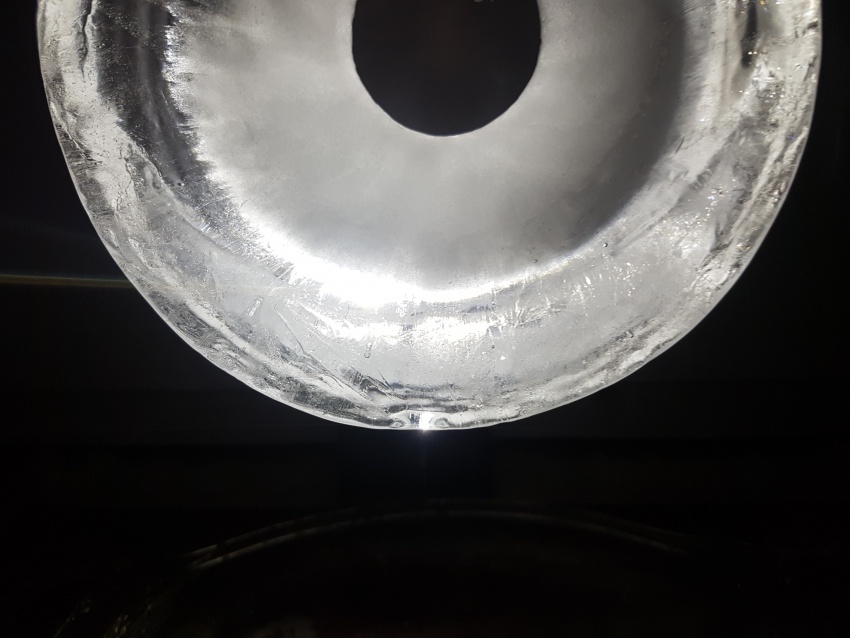Difference between revisions of "Shared:2019Concept"
(→Adaptive 3D Voronoi approach) |
(→Adaptive 3D Voronoi approach) |
||
| Line 33: | Line 33: | ||
=== '''Adaptive 3D Voronoi approach ''' === | === '''Adaptive 3D Voronoi approach ''' === | ||
| − | [[File:Voronoi principle.jpg| | + | [[File:Voronoi principle.jpg| 375px]][[File:Voronoi41.jpg| 470px]] |
Fig.2: Voronoi principle (left) and 3d application (right) | Fig.2: Voronoi principle (left) and 3d application (right) | ||
Revision as of 16:18, 11 January 2020
Off-Earth Manufacturing and Construction
Concept
Process
Excavation and inflatable structure
1. First phase of robot-aided, downward progressing excavation and gradual tunnel reinforcement using 3D printing.
2. Completion of excavation in upward movement.
3. Pressurized inflatable (as for instance https://www.extremetech.com/extreme/297081-aerospace-firm-shows-off-giant-inflatable-space-habitat) for the living environment is placed in the created cavity between the spiraling tunnels.
 Fig.1: In-situ progress of excavation and preparation of inhabitable spaces
Fig.1: In-situ progress of excavation and preparation of inhabitable spaces
Adaptive 3D Voronoi approach
Fig.2: Voronoi principle (left) and 3d application (right)
For spatial allocation at neighborhood scale we considered using the Voronoi logic. The advantages would be:
1. Extension of neighboring living areas.
2. Economy of resources due to less excavation (shared connection tunnels, shared material).
3. Possible organizational model for internal subdivision of space.
 Fig.3: 3D-printed Voronoi applications
Fig.3: 3D-printed Voronoi applications
Experiments with ice caps as insulation medium from radiation
Keywords
Inflatable, ice cap, pressurization, radiation shield.
Abstract
The discovery of water ice immediately under the surface of Mars by NASA’s Phoenix lander in 2008 prompted in our team an idea. Due to the very thin atmosphere surrounding the planet, an inhabited space needs good shielding from radiation. Solid water presents an opportunity.
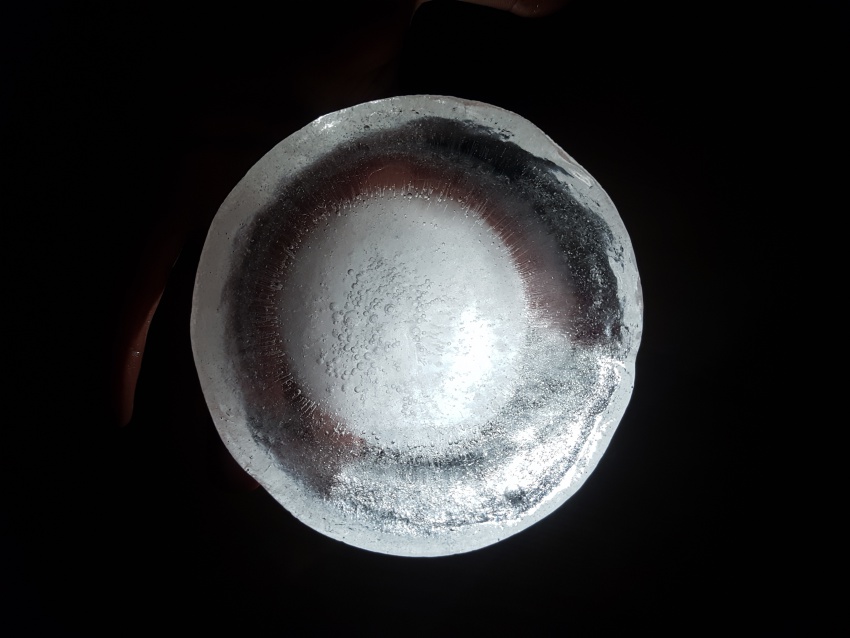 Fig.4: Experiment for an ice cap
Fig.4: Experiment for an ice cap
Description
We have considered two options, both based on the act of excavating the soil. The first kind of excavation needs to go deep enough so that a thickness of 5 meters of Martian soil can act as insulation for the radiation. The second one, for the moment in its conceptual and experimental stage, still underground, would minimize the excavation effort and insulation from radiation will rely on an ice cap of 1 meter thickness. Because water does not subsist in liquid form in the atmospheric conditions aforementioned, the ice caps will be enclosed and pressurized to prevent loss of ice mass (for example during the day when temperatures rise to 20 degrees Celsius.
For the time being, the team considers also the capabilities of these ice caps to absorb and transmit (sun)light, functioning as skylights. Several geometries will be explored and made available to ‘take a shine to’.
First experiment, Inspired by diverging-lens geometry. The convex side as seen from top-view, collects light and transmits it. It was visible, through the experiments, that the point where this curved surface is cut by an arbitrary plane, the ‘cut’ edges will shine the light transmitted from the opposite side.
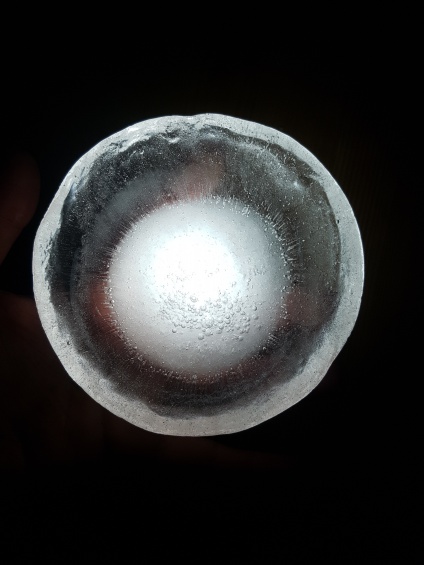


 Fig.5: study of transmission of light in different illumination conditions
Fig.5: study of transmission of light in different illumination conditions
Future questions
Further research will explore the feasibility of this idea in terms of:
1. Capabilities of pressurization of this specific inflatable.
2. Availability of ice to be used.
3. Technology necessary to model the ice in the desired shape.
4. Structural challenges.
Stay tuned for more!



 Fig.6: Conditions of light transmission within fragmented mediums (top) and at sharp angles (bottom)
Fig.6: Conditions of light transmission within fragmented mediums (top) and at sharp angles (bottom)
